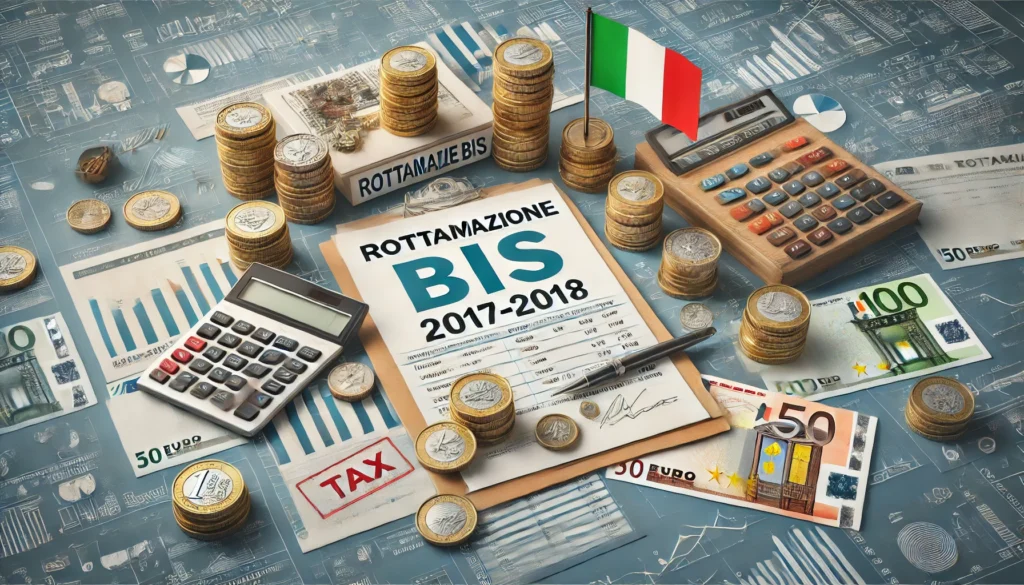Navigating the intricate landscape of income tax rules in Italy necessitates not only comprehension but also a proactive grasp of the manifold aspects that meticulously craft its taxation framework. Italy positions itself shoulder to shoulder with European peers like Germany and Portugal, flaunting a corporate income tax rate of 27.8%. This rate underscores Italy’s economic dynamics, potentially swaying decisions of businesses considering expansion or investment.
Personal income tax, or Irpef, emerges as a focal point for individuals, where the interplay of elements such as taxable income and country of residence holds sway. Notably, property owners find themselves within the orbit of property taxes like IMU and the now-removed TASI, contributing to the broader fiscal panorama. Moreover, the terrain is dotted with special schemes, providing a wide array of opportunities.
Throughout this informative guide, we navigate these details, casting illumination upon the varied questions that underscore Italy’s income tax regulations.
TARES tax
The TARES tax, or Tributo sui Rifiuti e sui Servizi, was a local service tax that was applied in Italy. The TARES tax essentially merged previous taxes related to waste management and municipal services. It was conceived to fund services such as waste collection and street cleaning, which are rendered by Italian municipalities.
Introduced in 2013, it was later replaced in 2014 by the TARI tax (Tributo sui Rifiuti e Servizi Indivisibili), which further refined the tax structure, retaining the objectives of financing the public services offered by municipalities, including waste management services.
To sum up, the TARES tax was a short-lived local service tax in Italy that was intended to fund waste management and other municipal services, and it was eventually replaced by the TARI tax in 2014.
Corporate Taxation: Decoding Italy’s Corporate Income Tax Rates
The corporate income tax landscape stands as a pivotal cornerstone within Italy’s intricate taxation system. At the present rate of 27.8%, Italy’s corporate tax rate assumes a strategic position, poised between Germany’s 29.8% and Portugal’s 31.5%. These rates wield a substantial influence over businesses, commanding their profitability trajectories and steering their pivotal financial resolutions. Undoubtedly, the corporate tax rate occupies a role of paramount significance, holding the reins in the determination of investment destinations and operational jurisdictions for enterprises.
Elevated tax rates can potentially exert pressure on retained earnings, constraining the financial resources available for expansion endeavors. Conversely, the allure of lower tax rates possesses the inherent potential to beckon foreign investments, thereby nurturing the fertile grounds for robust economic augmentation. For multinational corporations accurately contemplating Italy’s landscape as a prospective market, an intimate comprehension of these tax rates becomes the keystone upon which accurate financial blueprints and astute decision-making are meticulously hinged.


Delving into Irpef: Personal Income Tax Calculation in Italy
When considering individuals, Irpef, also known as personal income tax, assumes a foundational role within their financial landscape. The assessment of this tax hinges on the application of progressive rates, which span a spectrum from 23% to 43%, contingent upon an individual’s taxable income.
These rates undergo categorization into distinct tiers, each tailored to a specific income bracket. The inherent ethos of Irpef revolves around an equitable dissemination of the tax burden amongst individuals, ensuring that higher earners contribute proportionally more. Furthermore, Italy takes into account an individual’s country of residence when undertaking the computation of their personal income tax, a crucial factor for expatriates, given its potential to influence their tax obligations and financial strategizing. A comprehensive grasp of Irpef and its far-reaching implications stands as an imperative, empowering individuals to navigate investment choices, expenditure decisions, and their holistic financial well-being with acumen and confidence.
By understanding and strategically managing their tax liabilities, individuals can make informed financial decisions that contribute to their long-term financial security and growth.
Property Taxes Unveiled: IMU and Its Impact on Property Ownership in Italy
Property ownership in Italy introduces a distinct array of tax responsibilities, contributing an added layer of intricacy to the financial landscape. A fundamental consideration for property owners is the Italian Municipal Property Tax, commonly known as IMU, which has played a pivotal role in the country’s fiscal framework. IMU, an annual tax mandated by local municipalities, constitutes a substantial financial commitment for property owners. The IMU tax has been a subject of both scrutiny and necessity, serving as a crucial source of revenue for local governments. Its calculation takes into account a variety of factors such as the property’s type, location, and cadastral value, making the process notably intricate.
Once a cornerstone of property taxation, the Tax for Services Indivisible (TASI) was another significant facet of property ownership in Italy. TASI was instituted to finance essential indivisible services that catered to the welfare of the community. However, as of January 1, 2020, TASI has been formally eliminated, marking a substantial shift in Italy’s property tax landscape. The removal of TASI simplifies the tax structure for property owners, focusing the attention primarily on IMU. This shift has implications for both individual property owners and investors, as the dynamics of property ownership costs undergo a transformation. Property owners are advised to recalibrate their understanding of the taxation framework to accurately assess the financial responsibilities associated with property ownership in post-TASI Italy.


Capitalizing on Benefits: Special Tax Schemes in Italy
Italy’s taxation landscape also includes unique tax benefits and special schemes that present opportunities for individuals and businesses alike to optimize their financial strategies. One prominent example is the “100k Tax Scheme,” designed to entice high-net-worth individuals into establishing their residence in Italy. Under this scheme, eligible individuals can benefit from a flat tax rate of 100,000 euros applied to their foreign income. This provision serves as a compelling incentive for affluent individuals seeking to maximize tax advantages while enjoying the Italian lifestyle.
Furthermore, Italy’s strategic approach to economic development is evident through its implementation of special tax zones. These zones feature an attractive 7% tax rate and are strategically designed to foster growth and development in specific regions. Businesses and entrepreneurs looking to establish themselves in these areas can capitalize on this favorable tax rate to drive economic activities and contribute to regional progress.
Understanding the intricacies of these special tax schemes and their potential benefits is paramount for individuals and businesses aiming to make the most of Italy’s tax framework. By leveraging these schemes effectively, individuals can optimize their tax liabilities and financial strategies, while businesses can strategically position themselves in regions where tax incentives align with their growth objectives. Thus, a comprehensive comprehension of Italy’s special tax schemes empowers stakeholders to make informed financial decisions that yield positive outcomes.
Final Thoughts:
In conclusion, Italy’s income tax landscape presents a dynamic and multifaceted terrain, encompassing corporate taxation, personal income tax, property taxes, and special schemes. The influence of corporate tax rates extends beyond mere numbers, actively shaping business strategies and investment decisions. Similarly, the impact of personal income tax rates reverberates throughout individuals’ financial well-being, directly affecting their disposable income and spending power. Property owners are tasked with the responsibility of adeptly navigating the intricacies of IMU, ensuring that these taxes are factored into their property-related considerations.
Capitalizing on special tax schemes offers a strategic advantage, enabling both high-net-worth individuals and businesses to fine-tune their tax optimization strategies. As Italy’s tax regulations evolve, remaining informed and seeking professional guidance stand as essential pillars for informed financial decision-making.
Armed with an intricate understanding of these diverse elements, individuals and businesses alike can adeptly traverse Italy’s complex income tax landscape with confidence.
If you are interseted with similar topics, take a look at our related articles, such as, Property Tax In Italy: The Ultimate Guide For 2023, Income Declaration in Italy and Non-rented property: IMU and IRPEF rules and regulations.









